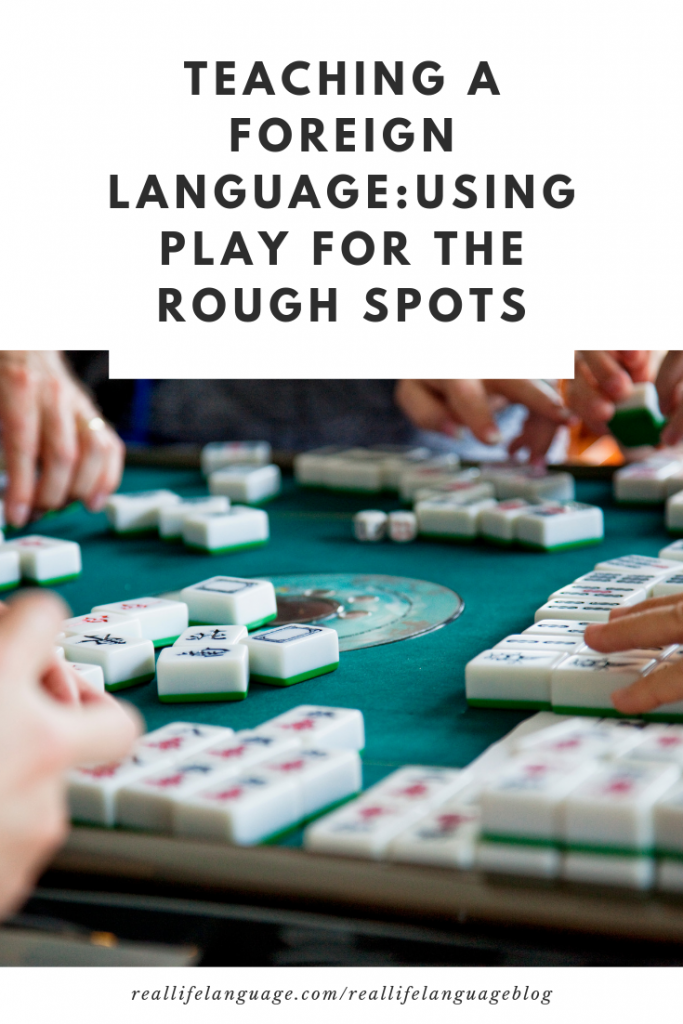
Teaching a Foreign Language: Using Play for the Rough Spots
I LOVE teaching foreign languages! With that said, it requires a lot of planning, and is not always considered the easiest of subjects. Any time I can infuse some games to get over the rough spots, bringing the words and phrases we are studying to life makes the atmosphere lighter in the room. It gets them practicing without even knowing it. Here are a few games that I use to get through some of the rough spots:
Tic-tac-toe. If you are unfamiliar with Dr. Rassias, please check out the link. He was an amazing leader in teaching foreign languages. He made learning fun and engaging. His activities with comprehensible input (a sort of early TPRS with lots of visuals) gets people speaking fast and accurately.
While Dr. Rassias did not invent the game, he had a great take on it. Put students in pairs. They identify vocabulary or verbs. Give them a list. They get X and O’s. The winner is obviously just like traditional tic-tac-toe. You can also do your tic-tac-toe with complex structure translations. They get it right, they get the X and the O. I like to infuse culture here with making my X’s and O’s cultural (i.e. frijoles or shapes in the TL). A very fun way to get through a rough spot.
Who Am I? This game is great for practicing new verb tenses. In this game, you can write on the forehead of the glasses. This is a fun way to ask and answer questions. You can even write a question on one pair of glasses, and the answer on the other. Students get moving around and practicing the new verb tense.
Hear and Circle. Anytime you have structures that are really difficult, I love to do Hear and Circle.
Teaching most grammar through comprehensible input is an effective and easy way to begin any new tense or structure. I never lead with grammar. After presenting structures and you hear some production from the students, the time is perfect. When the students start asking how something is formed, you know they are ready for the mini-lesson.
With that said, I like to introduce my most complex structures this way. I find that advanced and upper-intermediate students need some direct translation. After a quick presentation, they can quickly master something difficult leading with this method. While I believe that translations are not the ideal way to learn languages, I believe they make a lot of the difficult grammar instruction we have seen in many books become relevant.
To prepare, I write phrases all over a paper (or board) in the target language and English. I say one phrase in one language, and they circle the corresponding phrase in the target language. They get feedback right away. It is a tool I am happy to have for teaching a foreign language.
For these more advanced learners, I do longer sentences. They then have the handout to then create their own language. For example, if I’m teaching some if… then structures, the students will have a whole paper full of examples that they have engaged with. They can then take this to write their own poems. I love teaching some If..then structures. I have them create a Si yo fuera… presentation or poem. They might research and present as though they were from the TL country. They can talk about what they would eat if they were from that place, or what time they would go to school.
Dress Up. Dressing up is one of the easiest ways to get students over some of the rough spots of learning a new language. They can become this new person who speaks a new language. Some ways to do it:
Fashion Show. One student models and the other one presents in the target language what they’re wearing. If they are intermediate, you could have them do much longer descriptions and more elaborate outfits. You could also have them write about what everyone wears. For an advanced level task, I go to a target language magazine online and show them some examples of coverage of the fashion weeks in TL countries. The students have to then write about what they saw and read and write a critique about what they think of the whole idea.
Family Dress Up. I love to have students dress up like a family to learn this new vocabulary. I divide my students all up into different families, each one playing a role. They then dress up. Think bibs for the babies, fake moustaches, etc. They have to introduce each family member and how that person is related to them. For an intermediate task, we do the same thing, but then we have a party. The different families have to introduce themselves to the other families. For an advanced class, I have students get a photo of someone in their family. We use VoiceThread to narrate a story about life in the family.
When fun and laughter can be infused, it lowers everyone’s filter, making languages easier and more fun for everyone.
Sound effects. These are fun and can be found easily online.
Beginners: you might play some sound effects that represent different times of the day.
For example, they might listen to a rooster and know to say in the target language, something like good morning or alarm clock. You might play different kinds of weather and they have to guess the season, or what the weather’s like. Intermediates can make a little playlist to tell a story. Advanced students can make a soundtrack of their life and tell you about it in the target language.
How do you get through the rough spots in teaching a foreign language?
Want more ideas for your classes? Click here: